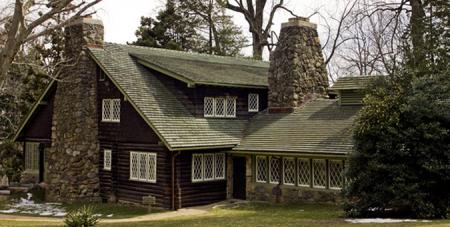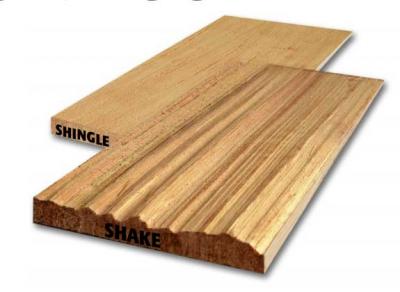
Cedar shakes differ from cedar shingles in that traditionally, they are hand split from a block, while shingles are generally milled with a saw. Cedar shakes are thicker, more irregular and create a charming rustic appearance. Cedar shingles are more precisely milled than shakes, creating a more refined, classic appearance. Shingles were the siding of choice for the post Victorian "Shingle Style" of the late 19th century. Cedar shingles were specified for both roofing and siding on many of Craftsman Style bungalows designed by Gustav Stickley, and many other styles of the the Arts and Crafts Period.
Cedar shake installations provide a more irregular, rustic appearance. They make a less sophisticated, more charming statement that works well for some smaller cottage styles.
Most cedar shakes today are made by machines, and are sawn on at least one side. Shakes are sometimes machine grooved to appear more like authentic hand split shakes. Although cedar shakes today are seldom hand split, they still follow the dimensional rules of their predecessors, which vary by grade. Shakes are thicker than shingles, ranging from 1/2" to 3/4" or greater at the butt end, while shingles range from about .4 in to .5 in.
Cedar shingle installations are more precise, lay flat, and are never installed with a felt interlay. For roofing, shingles are always installed so there are 3 layers of shingles at any point. Cedar shingles, properly installed as 3 overlapping layers, provide a highly weatherproof system, even in extreme weather.
Functionally, the most important difference between cedar shakes and shingles is that shingles are milled more precisely than shakes. Cedar shakes are more irregular, and don't lay as flat when installed. This creates gaps which can be penetrated by wind blown precipitation. Because shakes can be penetrated by wind blown rain or snow, a layer of felt paper is required between courses for roofing installations. This process helps block wind blown precipitation.

